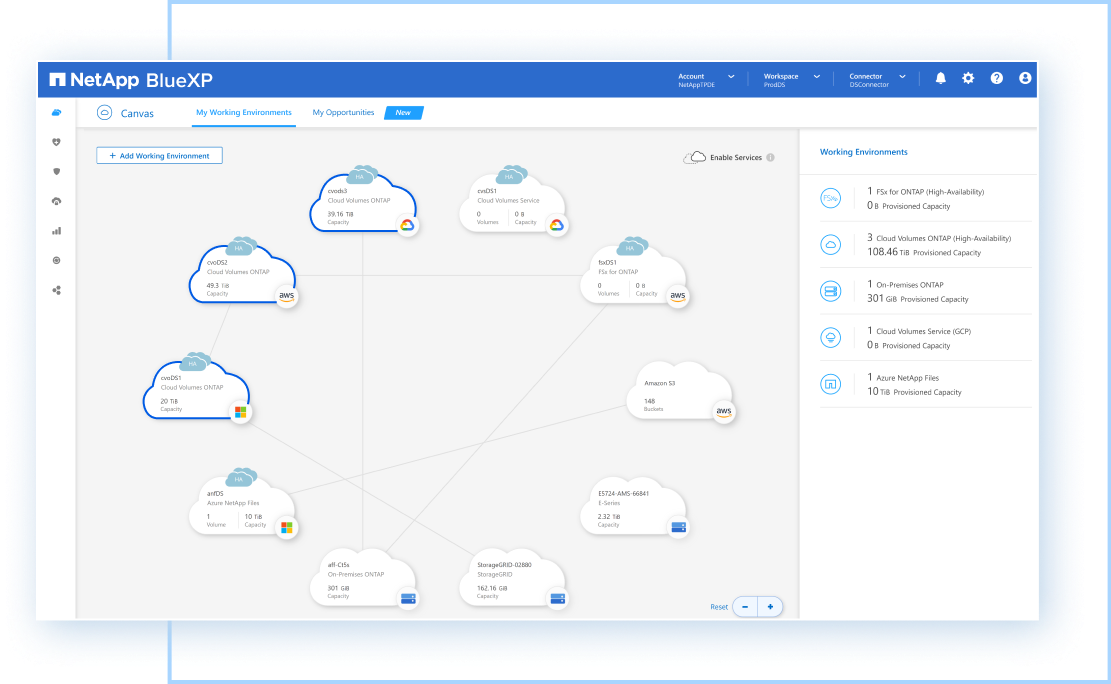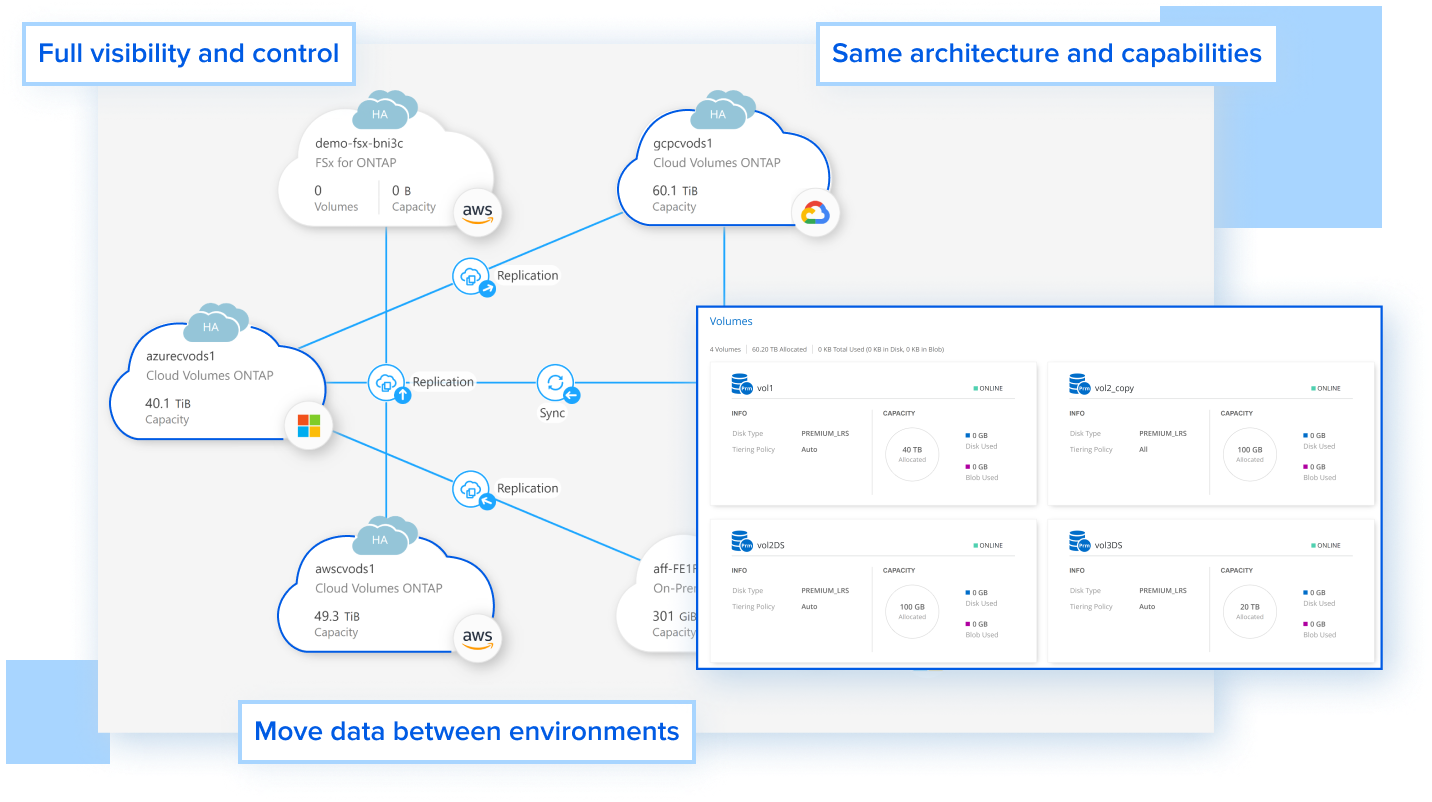- Product
- Solutions
- Resources
LEARN
- Cloud Storage
- IaaS
- DevOps
CALCULATORS
- TCO Azure
- TCO AWS
- TCO Google Cloud
- TCO Cloud Tiering
- TCO Cloud Backup
- Cloud Volumes ONTAP Sizer
- Azure NetApp Files Performance
- Cloud Insights ROI Calculator
- AVS/ANF TCO Estimator
- GCVE/CVS TCO Estimator
- VMC+FSx for ONTAP
- NetApp Keystone STaaS Cost Calculator
BENCHMARKS
- Azure NetApp Files
- CVS AWS
- CVS Google Cloud
- Pricing
- Blog
TOPIC
- AWS
- Azure
- Google Cloud
- Data Protection
- Kubernetes
- General
- Help Center
- Get Started
NetApp Cloud Volumes ONTAP allows you to deploy storage in the public cloud, leveraging native cloud infrastructure. With Cloud Volumes ONTAP, you can build storage for mission-critical applications, databases, containers, and user files on the cloud of your choice, while leveraging NetApp’s enterprise-grade technology that provides security, resilience, high availability, and cost-performance.




